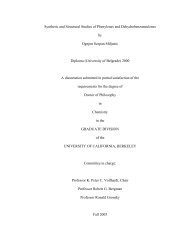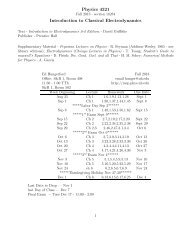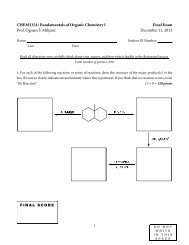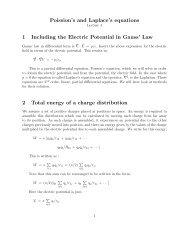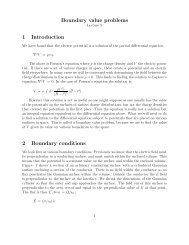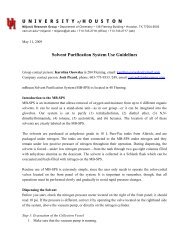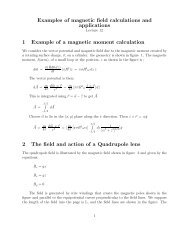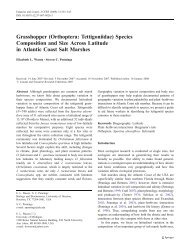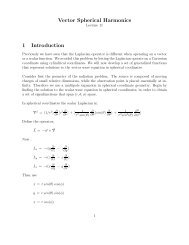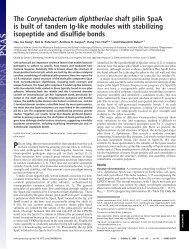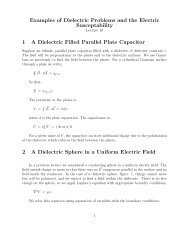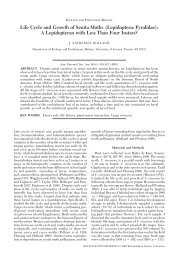Scattering 1 Classical scattering of a charged particle (Rutherford ...
Scattering 1 Classical scattering of a charged particle (Rutherford ...
Scattering 1 Classical scattering of a charged particle (Rutherford ...
Create successful ePaper yourself
Turn your PDF publications into a flip-book with our unique Google optimized e-Paper software.
d 2 IdωdΩ = [ q 2 ∞∫16π 3 cǫ ]|−∞dt [ˆn × [(ˆn − ⃗ β) × ˙⃗ β](1 − ⃗ β · ˆn) 2 e iω[t−⃗ β·R/c] | 2For low frequencies, the exponential term is ≈ 1. Note that;ˆn × (ˆn − ⃗ β) × ˙⃗ β1 − ⃗ β · ˆn= d dtIntegrate by parts to obtain;d 2 IdωdΩ = [ q 2 ∞∫16π 3 cǫ ]|−∞d] [ˆn × ˆn × β ⃗1 − β ⃗ · ˆn[ˆn × ˆn × ⃗ β1 − ⃗ β · ˆnAlso assume non-relativistic motion, β → 0.d 2 IdωdΩ = [ q 216π 3 cǫ ]|ˆη · ∆⃗ β| 2]In the above ˆη is the polarization direction, and ∆ ⃗ β is the differential change in the velocity<strong>of</strong> the charge. In the s<strong>of</strong>t photon limit, the energy <strong>of</strong> a photon is ω so the number <strong>of</strong> photonsinto dΩ and between frequencies between ω and ω + dω is approximately;q 2N ph = (1/ω)[16π 3 cǫ ]|ˆη · ∆⃗ β| 2The cross section for s<strong>of</strong>t photon emission in a <strong>charged</strong> <strong>particle</strong> collision is;d 3 σ = [N dσdΩ q d(ω)dΩ ph ]gam dΩ qWhere dσdΩ qis the cross section for a Coulomb interaction (<strong>Rutherford</strong> <strong>scattering</strong>). Thensubstitute the various equations and integrate. Use figure 5 to obtain ∆ ⃗ β. The result forlow frequencies and non-relativistic motion is;dIdω =q24π 2 cv [ln(1.123γv wb min)]MvMvθQ = |Pin − Pout| < 2Mv∆ P ~ QFigure 5: The geometry for the momentum transfer12




